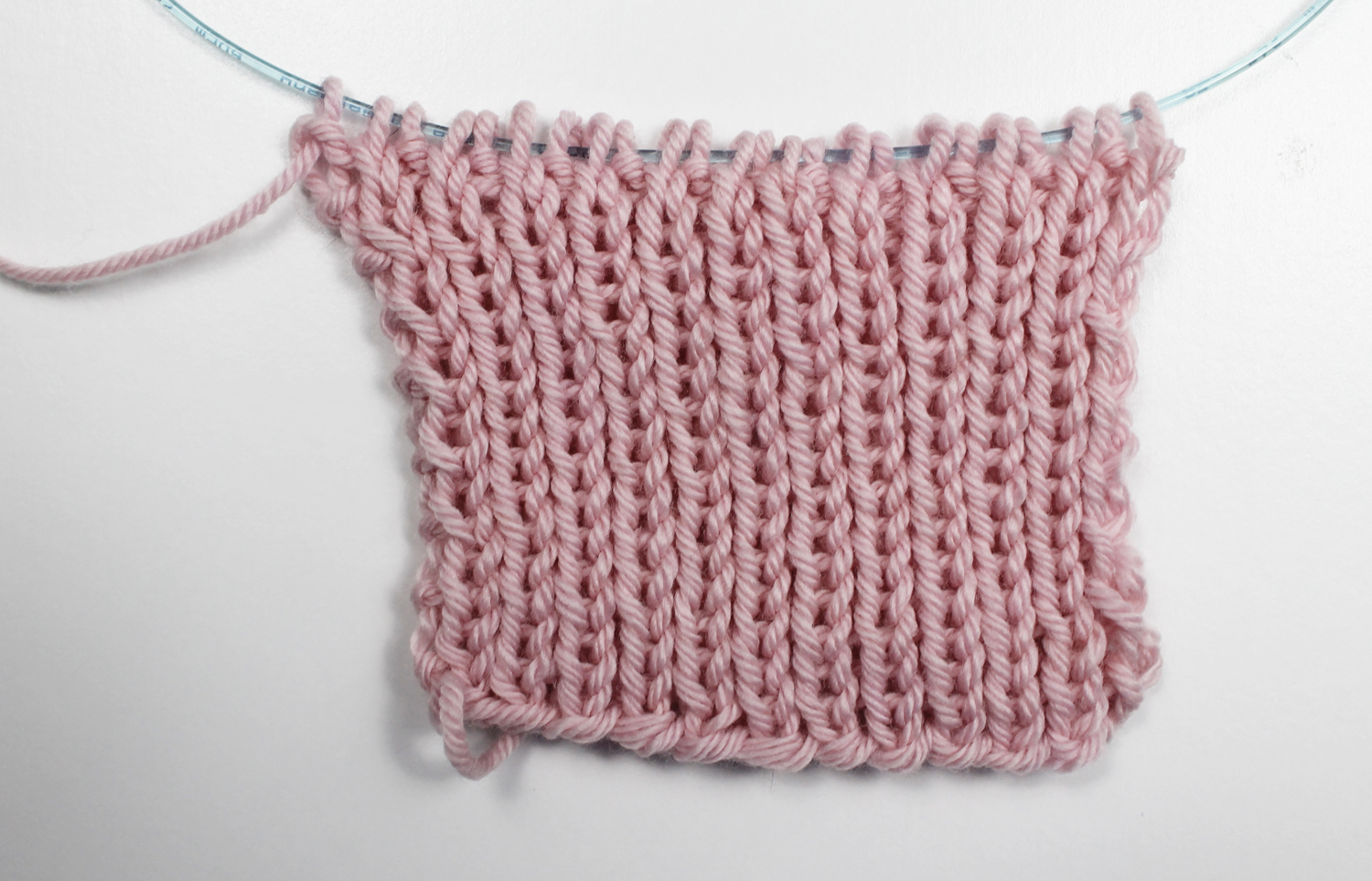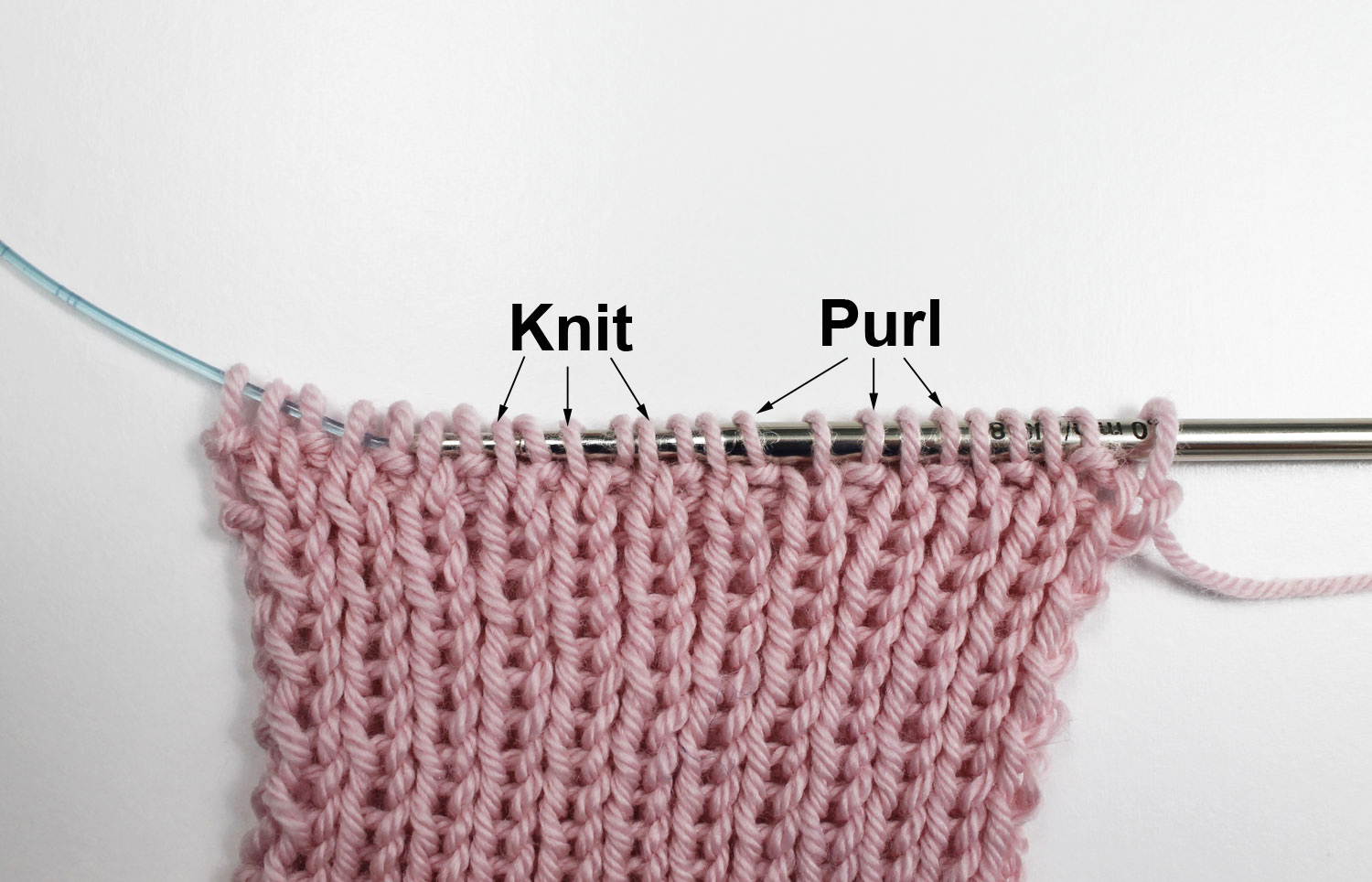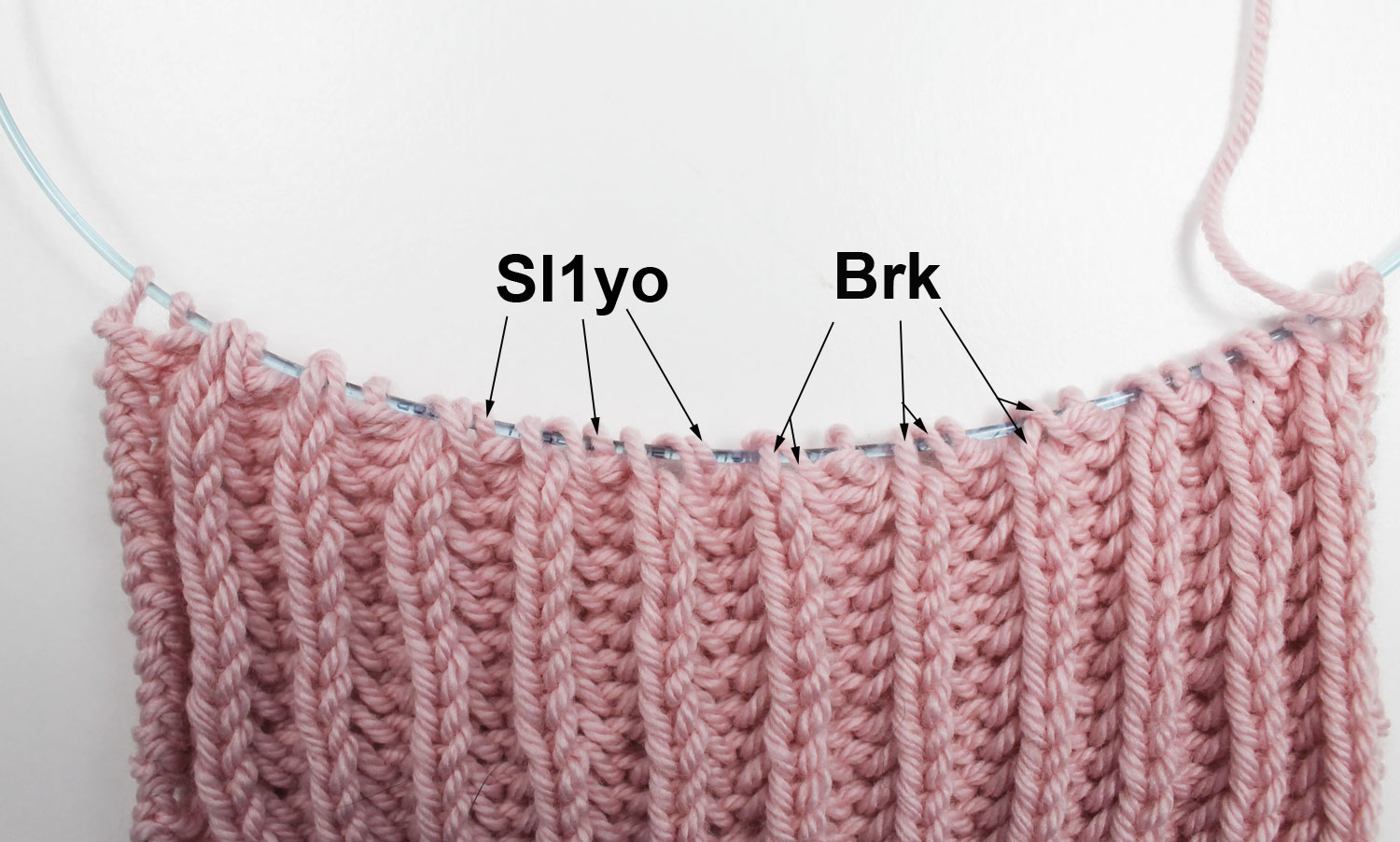Sometimes it’s difficult to recognize brioche — especially when it’s knit using only one color. But with an expert eye, you can learn how to tell the difference.

The swatch on the left is a K1P1 rib, and the swatch on the right is a brioche rib
If you’ve done it before, you know it can be worked over multiples.
For example, K2,P2 and K3,P1 ribbing are both worked over a multiple of 4 stitches. A K2, P1 ribbing is worked over a multiple of 3 stitches. You can work rib in the round or flat.
Like regular rib, brioche rib can be worked a number of ways. It can be worked flat or in the round in either one or two colors. Brioche rib can be worked in different multiples, too, just like regular rib.
While many of the technicalities are the same, the real differences are in the way the resulting knitted fabric looks and feels. Let’s take a look at the two different types of rib.
Regular K1, P1 ribbing

Yarn used: Cloudborn Superwash Merino Worsted Twist in Petal
Needle size used: US 8
(Worked over a multiple of 2 stitches)
Row 1: *K1, P1; repeat from * across.
Repeat Row 1 for rib pattern.
If you know how to knit and purl, you already know the basics of this stitch. Knit one stitch, then purl the next stitch. Just repeat this across the row.

If you forget where you are in the pattern, just read the stitches. The basic rule is: knit the knits and purl the purls. So when you see a knit stitch (the one that looks like a little V), knit it. When you see a purl stitch (the one that looks like it has a little scarf wrapped around its neck), then purl it.
The rib will start to shrink up after a couple of rows, sometimes totally hiding the purl stitches until you stretch out the knit fabric.
That stretch is why this rib works so well on sweater hems, sleeve cuffs, necklines and any other place where you want structure with stretch.
Brioche ribbing

Yarn used: Cloudborn Superwash Merino Worsted Twist in Petal
Needle size used: US 6
Brioche rib can be worked in different multiples and with more than one color, but for the sake of comparison, here we’ll work it flat in one color using a multiple of 2.
Row 1 (set up): *K1, sl1yo; repeat from * across.
Row 2: *Brk1, sl1yo; repeat from * across.
Repeat Row 2 for brioche rib pattern.

Just like with the K1,P1 ribbing, you can learn to read your knitting so that you never lose your place. When you see the stitch that looks like a purl stitch, then you need to sl1yo (slip 1 yarn over). When you see 1 knit stitch plus 1 yarn over, that means you need to brk (brioche knit). Stitches that require a brk will always be worked together in a pair.
You’ll notice that the knit stitch of the brioche rib looks really similar to the K1P1 rib. The difference here is that the rib doesn’t quite shrink up as much, so it shows off those stitches in between.
K1P1 and brioche rib similarities
- Both are stretchy.
- Both are reversible.
- Both can use the same cast on and bind off.
- Both work well for edgings like sleeve cuffs, sweater hems, etc.
K1P1 and brioche rib differences
- Brioche rib is slightly thicker and squishier than regular rib.
- Brioche rib uses more yarn than regular rib.
- Regular rib works up faster than brioche rib.
- Regular rib shrinks up more than brioche rib.
- Brioche rib uses a smaller needle than regular rib, even if it’s the same yarn weight.
- Brioche rib uses more yarn.

I think its too much work